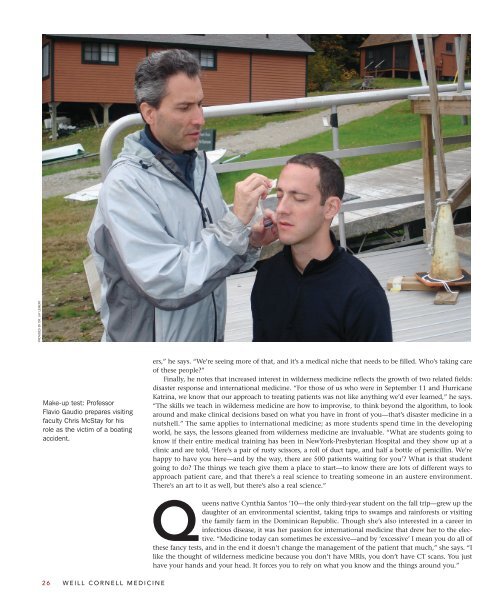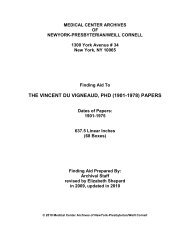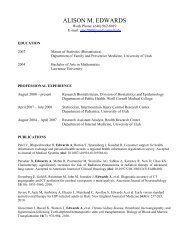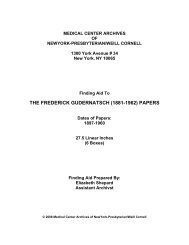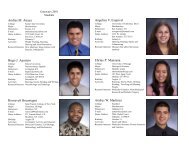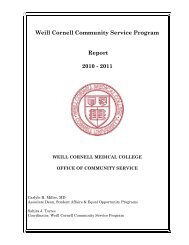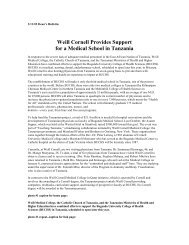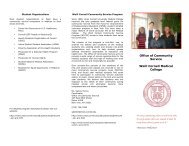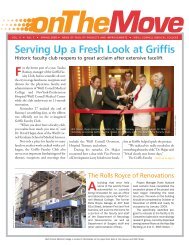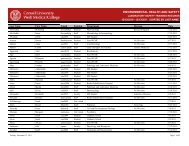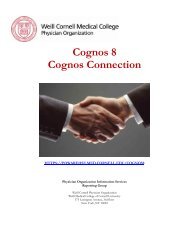Weillcornellmedicine - Weill Medical College - Cornell University
Weillcornellmedicine - Weill Medical College - Cornell University
Weillcornellmedicine - Weill Medical College - Cornell University
You also want an ePaper? Increase the reach of your titles
YUMPU automatically turns print PDFs into web optimized ePapers that Google loves.
PROVIDED BY DR. JAY LEMERY<br />
Make-up test: Professor<br />
Flavio Gaudio prepares visiting<br />
faculty Chris McStay for his<br />
role as the victim of a boating<br />
accident.<br />
26 WEILL CORNELL MEDICINE<br />
ers,” he says. “We’re seeing more of that, and it’s a medical niche that needs to be filled. Who’s taking care<br />
of these people?”<br />
Finally, he notes that increased interest in wilderness medicine reflects the growth of two related fields:<br />
disaster response and international medicine. “For those of us who were in September 11 and Hurricane<br />
Katrina, we know that our approach to treating patients was not like anything we’d ever learned,” he says.<br />
“The skills we teach in wilderness medicine are how to improvise, to think beyond the algorithm, to look<br />
around and make clinical decisions based on what you have in front of you—that’s disaster medicine in a<br />
nutshell.” The same applies to international medicine; as more students spend time in the developing<br />
world, he says, the lessons gleaned from wilderness medicine are invaluable. “What are students going to<br />
know if their entire medical training has been in NewYork-Presbyterian Hospital and they show up at a<br />
clinic and are told, ‘Here’s a pair of rusty scissors, a roll of duct tape, and half a bottle of penicillin. We’re<br />
happy to have you here—and by the way, there are 500 patients waiting for you’? What is that student<br />
going to do? The things we teach give them a place to start—to know there are lots of different ways to<br />
approach patient care, and that there’s a real science to treating someone in an austere environment.<br />
There’s an art to it as well, but there’s also a real science.”<br />
Queens native Cynthia Santos ’10—the only third-year student on the fall trip—grew up the<br />
daughter of an environmental scientist, taking trips to swamps and rainforests or visiting<br />
the family farm in the Dominican Republic. Though she’s also interested in a career in<br />
infectious disease, it was her passion for international medicine that drew her to the elective.<br />
“Medicine today can sometimes be excessive—and by ‘excessive’ I mean you do all of<br />
these fancy tests, and in the end it doesn’t change the management of the patient that much,” she says. “I<br />
like the thought of wilderness medicine because you don’t have MRIs, you don’t have CT scans. You just<br />
have your hands and your head. It forces you to rely on what you know and the things around you.”


